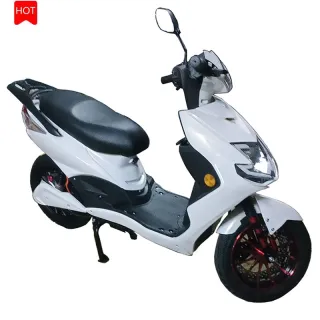Scooter vs Motorcycle: Which Is Safer to Ride?
As urban mobility solutions continue to evolve, scooters and motorcycles stand out as popular choices for commuters seeking efficient and convenient transportation options. However, when it comes to safety considerations, riders often wonder which vehicle offers a safer riding experience.
Size and Stability:
Scooters typically have smaller engines and lighter frames compared to motorcycles, resulting in a lower center of gravity and increased stability at lower speeds. Their step-through design and automatic transmissions offer easier handling, making them more accessible to novice riders.
Motorcycles, on the other hand, offer greater power and speed capabilities, but their larger size and manual transmissions require more advanced riding skills. While motorcycles may provide better performance on highways and in challenging terrain, they can be less forgiving to inexperienced riders in urban environments.
Visibility and Awareness:
Scooters often feature upright seating positions and higher handlebars, providing riders with a better view of surrounding traffic and improved visibility to other road users. Their compact size and maneuverability allow riders to navigate through congested city streets with ease, reducing the risk of collisions.
Motorcycles, although more powerful and capable of higher speeds, may be less visible to other motorists due to their lower riding positions and narrower profiles. Riders must actively maintain situational awareness and use defensive riding techniques to mitigate the risks associated with reduced visibility.
Protective Gear and Safety Features:
Both scooter and motorcycle riders should prioritize safety by wearing appropriate protective gear, including helmets, gloves, jackets, pants, and boots. Helmets, in particular, are essential for minimizing head injuries and fatalities in the event of accidents.
While some scooters may come equipped with basic safety features such as anti-lock braking systems (ABS) and traction control, motorcycles often offer more advanced technology and customization options, including ABS, electronic stability control (ESC), and rider modes tailored to specific riding conditions.
Rider Training and Experience:
Regardless of the type of vehicle, rider training and experience play a crucial role in ensuring safe and responsible riding practices. Novice riders should consider enrolling in certified training courses to develop essential riding skills, hazard awareness, and emergency maneuvers.
Experienced riders should regularly refresh their skills through continuing education programs and practice defensive riding techniques to anticipate and respond to potential hazards on the road.
Both scooters and motorcycles offer viable transportation options for urban commuters, each with its own set of safety considerations. While scooters may appeal to riders seeking simplicity, agility, and ease of use, motorcycles provide greater performance capabilities and customization options for experienced riders. Ultimately, safety lies in the hands of the rider, who must prioritize training, awareness, and responsible riding practices to enjoy the benefits of two-wheeled mobility safely.


Comments
0